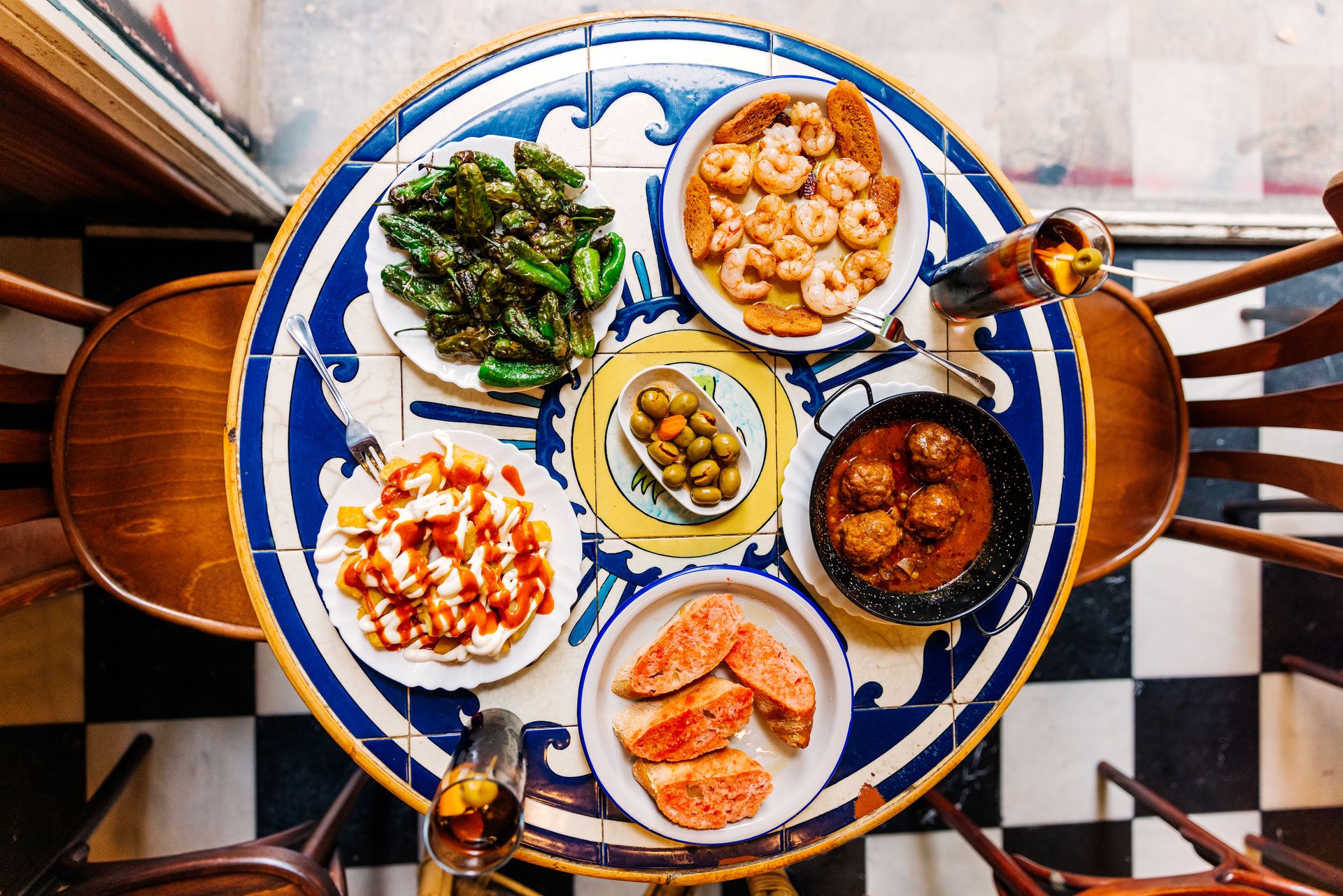Fascinating dishes from all over the world: goulash, ceviche, raclette and more!
Peruvian cuisine has been ranked No. 1 for 11 years in a row since 2011 in the World Travel Awards - also considered the Oscars of the travel industry. Ceviche is a representative dish of Peru, as it is a gourmet nation. The dish is made by pickling raw seafood in lime juice and adding vegetables and coriander.
In the past, Portuguese monasteries used egg whites to glue washed sheets. Pastel de Nata was born in an effort to make use of a large amount of leftover egg yolk. After the Liberal Revolution of 1820, many monasteries were closed and displaced people started selling the sweets they had learned to make in the monasteries. This baked confectionery became the origin of egg tarts, which have become popular around the world.
Borscht is one of the three major soups in the world and is eaten in many countries. Although it is often thought of as a Russian dish, it is actually a Ukrainian soup. There is no fixed recipe for borscht, so all the leftovers in the fridge can be put in a pot and simmered. Beets are often used, giving the soup a bright red color, but there are also green and white borscht that do not have beets.
As opposed to the American-style cinnamon rolls, the authentic Swedish cinnamon rolls are moderately sweet and have cardamom for a sharper taste. The snack was born after the First World War, and since it uses only ingredients that are easy to obtain during economic hardship, it quickly became very popular and spread across continents. Sweden has a cinnamon roll day, and every year on October 4th, 8 million cinnamon rolls are sold in a country of 10 million people.
Cepelinai is a representative dish of Lithuania, but its origin is not very old. Born in the middle of the 20th century, it was named Zeppelinai because its shape resembled the airship Zeppelin developed in Germany. The dish consists of a chewy potato dough with ingredients stuffed inside such as minced meat and cottage cheese.
A Moroccan clay pot, or tajine, with a unique lid, is the ultimate slow-food machine. For the meal, meat or fish is arranged in layers with vegetables in the tajine pot and steamed. Moisture and fragrance from the food accumulate in the upper part of the lid, then cool down, become water droplets, and return to the food. Tajine dishes are made without water and therefore have a deep taste with the concentrated flavors of the ingredients.
Chinese gyoza spread across the Silk Road to Europe, where they were developed using the ingredients of each country. A typical example of this is the Polish national dish, pierogi. In addition to side dishes such as meat, mashed potatoes, and cheese, there are also pierogi desserts with custard cream and berries. Pierogi are usually boiled and eaten right away, but if there are leftover pierogi in Polish households, they are baked the next day.
The famous British writer Somerset Maugham once said: "If you want to eat good food in England, choose a full breakfast for all three meals." It's a hearty breakfast, so rather than eating it every morning, it's a leisurely breakfast to enjoy on your days off.
This dish is made by heating a large mixture of cheese made from milk, then scraping off only the melted part with a knife, and eating it on boiled potatoes or bread. Switzerland is famous for its cheese fondue, but raclette is even more popular. It originated in the Valais region in southern Switzerland.
Georgia is considered the gourmet country of Eastern Europe. Its representative dish is called khinkali, a thick-skinned dumpling-like dish. Minced meat is seasoned with spices such as chili powder and used as a filling. Twist the skin, grab the closed part, and eat the khinkali - but don't eat the part that's hard.
Goulash is a soup made by stewing beef with paprika and other vegetables. The meaning of the word is 'cowherd,' and it is said to be a dish that was made while the cattlemen worked outdoors. Goulash originated in Hungary but is widely eaten throughout Eastern Europe. Even dishes with the same name can have their own uniqueness depending on the country, so it would be fun to travel across Eastern Europe to compare the goulash from each country.
Corn porridge is made from coarsely ground corn and boiled in milk and butter. One serves it with meat or cheese. Mamaliga was once eaten as a staple food in Italy and Romania, but it has been replaced by bread. People in Moldova, however, still eat mamaliga as a staple food on a daily basis.
Greek cuisine is rich in dip-type dishes, such as taramosalata, that are eaten with thin bread. Taramosalata is a mash of salted carp, cod, or mullet mixed with olive oil, lemon juice, and potatoes.
Kebab is a fast food that was popularized by Turkish immigrants in Germany. In Turkey itself, all meat dishes grilled without using water are called kebabs, and they distance themselves from the fast food doner kebabs. There are many types of kebabs, but the most popular is the Adana kebab, which is made from minced meat seasoned with chili peppers and other spices.
A dish of meat, cheese, avocado, etc. sandwiched between bread made from ground corn: it's a historical dish that was already eaten before Europeans came to South America. Arepas are also a staple food in Colombia's neighbor Venezuela, but due to economic circumstances, they are often made with only water and no milk in the dough.
Sate ayam is Indonesian style yakitori. The dish originated in Java but is widely eaten in Southeast Asian countries. Chicken marinated in a spicy sauce, containing coriander and other ingredients, is skewered and slowly grilled over charcoal, then dipped in a sweet sauce containing peanuts and eaten.



























